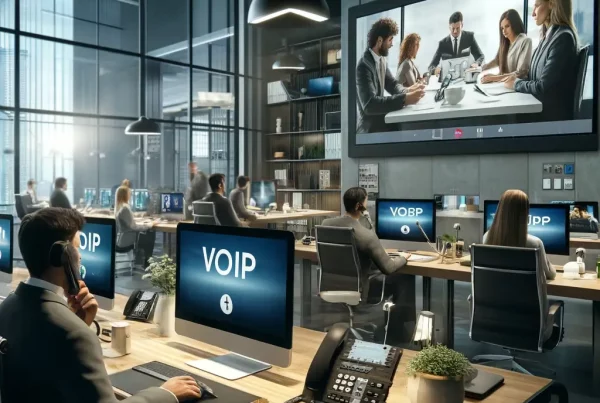Martyn's Law aims to ensure better protection against terrorism by implementing stronger security measures in busy public places. In this blog post, we will explore the importance of Martyn's Law and explain how the use of CCTV systems and other technology solutions can help organisations comply with the future law.
The UK government is taking decisive steps to enhance public safety and protect against the evolving threat of terrorism. As part of these efforts, the government has introduced the Protect Duty, which will be known as “Martyn’s Law” in tribute to Martyn Hett, a victim of the Manchester Arena terrorist attack in 2017. It is expected to pass into law in December 2023 or January 2024.
Why Martyn’s Law is Needed
The UK has witnessed 15 terror attacks since 2017, resulting in tragic loss of life and injuries among innocent people going about their daily lives. The multifaceted and evolving nature of the terrorist threat makes it challenging to predict and prevent attacks effectively.
Currently, without legal requirements, counter-terrorism security efforts often lag behind necessary activities, leading to inconsistencies and inadequate security measures. Martyn’s Law aims to improve security and establish consistent, proportionate measures at public venues to better prepare for future threats.
Who will Martyn’s Law apply to?
This new law is aimed at public venues with capacity over 100 people that are used for entertainment and leisure, retail, food and drink, museums and galleries, sports grounds, public areas of local and central government buildings, visitor attractions, places of worship, health, and educational establishments. This means it will include theatres and cinemas, sporting venues, large restaurants and pubs, hotels and other hospitality businesses. The law doesn’t just include buildings, but also permanent outdoor attractions that have a physical boundary.
The law will have different requirements based on the size of your venue
If your venue can hold more than 100 people, you will fall into the standard tier. As the government website explains, you will be required to:
‘undertake low-cost, simple yet effective activities to improve preparedness. This will include training, information sharing and completion of a preparedness plan to embed practices, such as locking doors to delay attackers progress or knowledge on lifesaving treatments that can be administered by staff whilst awaiting emergency services.’
If your venue holds more than 800 people you will fall into the enhanced tier and therefore be asked to do a bit more. You will:
‘be required to undertake a risk assessment to inform the development and implementation of a thorough security plan. Subsequent measures could include developing a vigilance and security culture, implementation of physical measures like CCTV or new systems and processes to enable better consideration of security.’
How Martyn’s Law Will Enhance Public Safety from Terrorism
Martyn’s Law will play a crucial role in enhancing public safety and reducing the risk of terrorism by introducing legal obligations for certain premises and events. The legislation will require responsible persons to consider the threat from terrorism and implement appropriate mitigation measures. Compliance with Martyn’s Law will lead to better protection through the implementation of enhanced security systems, staff training, and clearer processes.
Using CCTV Systems and Technology Solutions to Comply with Martyn’s Law
CCTV systems and other technology solutions play a vital role in helping organisations comply with Martyn’s Law and improve public safety. Here’s how they can contribute:
Enhanced Surveillance
CCTV systems provide continuous surveillance, enabling the monitoring of public areas and the identification of potential security threats. High-quality cameras with advanced features can capture detailed footage, assisting law enforcement agencies in investigations and preventive measures.
Real-time Threat Detection
Advanced video analytics integrated into CCTV systems can detect suspicious activities, unauthorised access, or abandoned objects in real-time. Intelligent algorithms can trigger alerts, allowing security personnel to respond promptly and prevent potential threats from escalating.
Access Control Systems
Technology solutions like access control systems ensure that only authorised individuals can enter specific areas within premises. These systems can incorporate features such as biometric authentication, smart cards, or PIN codes, bolstering security measures and preventing unauthorised access.
Integration with Incident Response
CCTV systems and technology solutions can be seamlessly integrated with incident response procedures. In the event of an attack, security personnel can quickly access live camera feeds, gather critical information, and coordinate an effective response to minimise harm and save lives.
Data Analytics and Forensic Investigations
CCTV footage can be analysed using advanced data analytics techniques to uncover patterns, identify potential threats, and improve future security strategies. In addition, recorded footage can be invaluable for forensic investigations, aiding law enforcement agencies in gathering evidence and apprehending perpetrators.
Technology to protect against terrorism
Martyn’s Law is a crucial step towards strengthening public safety in the face of terrorism. Compliance with this future law will be facilitated by the adoption of CCTV systems and other technology solutions, which enhance surveillance, detect threats in real-time, control access, integrate with incident response, and enable data analytics for better security practices. By leveraging technology, organisations can ensure their preparedness, protect staff and the public, and contribute to a safer and more secure environment.
Need Help?
If you need guidance on the available technologies to help your venue comply with Martyn’s law, get in touch. We have specialists in enhanced surveillance, real-time threat detection, incident response technology and forensic analysis.



